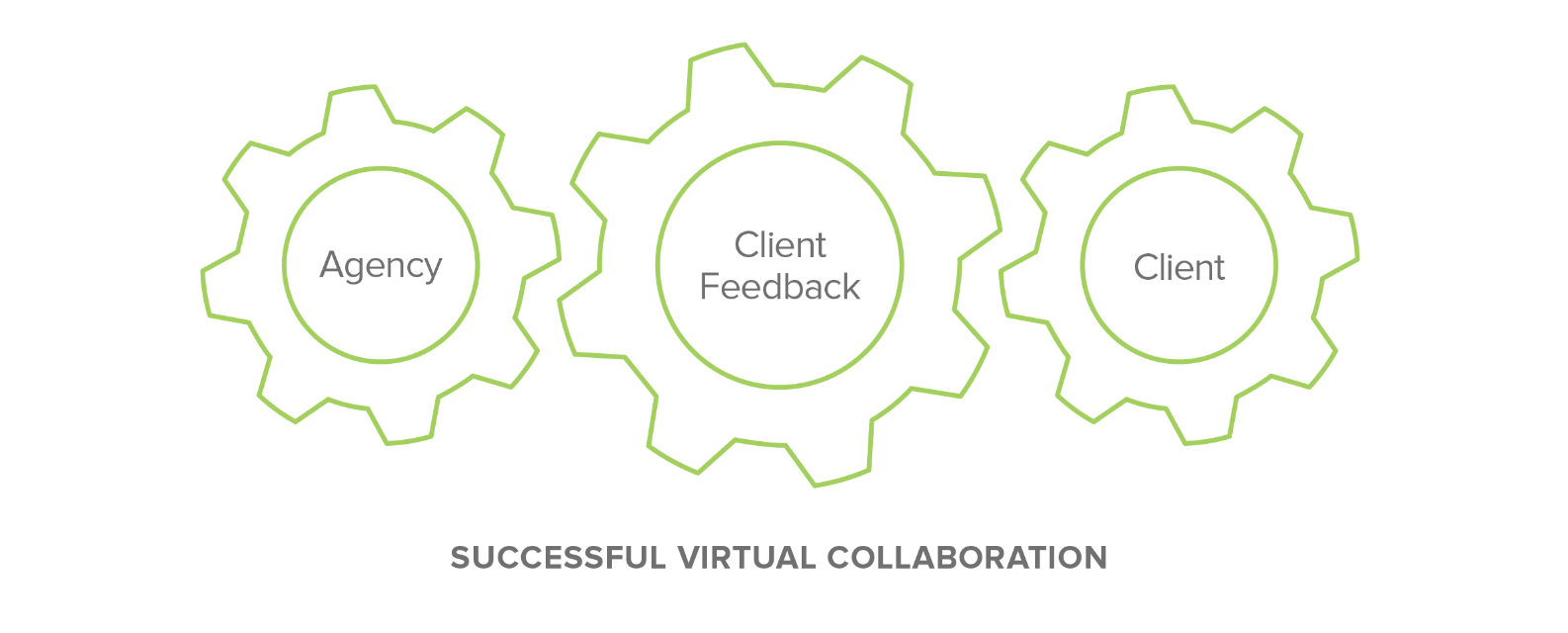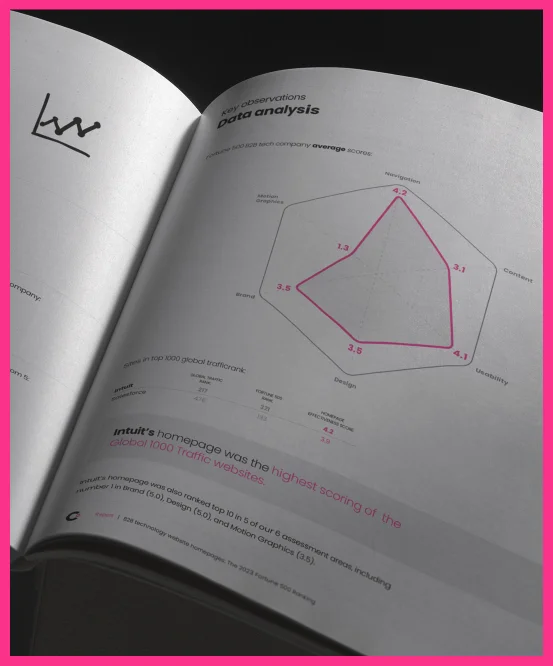Without a clear timetable for when concerns over social distancing and COVID-19 will subside, all of us have had to adapt to a new normal. From conference room workshops to impromptu brainstorms with coworkers, the day-to-day norms we counted on to effectively do our jobs have all been disrupted. Given these comprehensive changes, how do we maintain the same levels of communication and collaboration that have sustained us throughout our careers?
At a time like this, the idea of starting an engagement with an outside agency feels even more daunting. Finding a digital design partner whose approach resonates with your needs is challenging enough when you can meet in the same room. The stakes and depth of discussion involved in developing a new website or marketing initiative simply feel too great to cover through standard video conferencing – and that’s assuming an agency uses the remote-working tools you and your team recognize.
Remote collaboration is an ever-evolving process that allows your agency partnership to remain vital and potentially grow in new directions.
Although everyone’s workflow has been upended, the same shouldn’t be said about the ability to establish an effective working relationship. Before your B2B firm starts collaborating with a new agency, you should have a clear sense they’ve thought about these issues and understand their challenges. Remote collaboration isn’t something to be solved with a single step. It’s an ever-evolving process that allows your agency partnership to remain vital and potentially grow in new directions.
Establishing a Working Relationship Early Builds Confidence in Your Agency
When working remotely with a web design partner, you want to feel assured that you’re in good hands, especially as you establish how you’ll be working together.
Even at the onboarding stage of a project, you should have a sense that your agency’s process hasn’t skipped a beat. Through having undergone multiple practice sessions and refinements with their internal teams, your agency’s process should flow in a way that seems like they’ve been facilitating remote engagements with teams like yours for years. If they’re introducing a new collaboration tool, they should provide a simplified education in not only how it works but also their reasoning behind its use and what they hope to achieve.

Though a learning curve is inevitable with any new technology, any of your concerns about adapting should be offset by your agency’s clear and assured instructions. In the end, they should earn your confidence by outlining their thought process and goals in translating the in-person experience to a virtual setting. And, just as importantly, they should illustrate how these changes will benefit your project.
Starting a project with an outside firm is already a heavy undertaking. Your web design partner should prove its commitment to easing that burden by completing the advance work and research behind adapting to a new environment on your behalf. With that technical burden removed from your shoulders, you and your team are free to focus on collaboration.
Feedback is Critical to Virtual Agency-Client Collaborations
We’ve all grown more adept at working in virtual meetings. But for your collaboration with a digital agency to be effective, it’s just as important that they recognize what isn’t working.
Every marketing team is different, and what works in establishing an environment that facilitates engagement for one organization may not work for yours. Differences in company culture or social dynamics impact how we interact, which can make a workshop feel stagnant.
On a human-to-human level, your team’s cues during remote workshops provide the most immediate form of feedback about a collaboration’s effectiveness. Is everyone on your team still engaged? Or have some people checked out? Or, are participants stepping on one another as they try and talk? Remaining tuned into these factors has allowed Clear Digital to refine our workshop structure and tighten up our process.
Remote collaboration has also changed how and when we collect client feedback. We’ve always maintained regular check-ins with our clients as major pieces of a project fall into place. Now, remote workshops constitute another key checkpoint to capture input from our clients. Because we’re all adjusting to this new way of working together, we’ve started tweaking our questions to focus on the client’s experience rather than their impressions of how a project is progressing. Depending on the length of an engagement, these checkpoints usually happen every month.
Every agency should ask, is this working for you? What do you like about it? Or, were there moments where we didn’t seem in tune with what you’re saying? From there, it’s a matter of finding out whether issues center around the tools or the process and adjusting accordingly.

Virtual Collaboration Introduces Challenges – and Potential Improvements
Technical difficulties and establishing a productive workspace are just two of the challenges in remote relationships between you and your digital agency. But for us, the transition to a virtual workflow has also opened the door to exploring cleaner, easier ways of collaborating.
To kick off each of our engagements, our Velocity Workshops have long functioned as a live-action brief. This process ensures a project’s estimates are in alignment while establishing a roadmap toward success with every stakeholder. It’s a collaborative workshop built upon clear back-and-forth communication rather than simply presenting a document outlining our approach to a project. For us, replicating that experience in a virtual environment is essential.
In an intense working session like this, there’s a psychological component to providing a sense you’re being heard and every idea will be retained, which in the past required markers and white sheets of paper. Just as your project requires design expertise, your agency should apply those same skills to design a workshop experience that feels intuitive.
Virtual collaboration is allowing us to ask new questions that will create easier processes for how we work together going forward.
Remote collaboration tools like Mural have allowed us to create a virtual, whiteboard-like workspace where everyone can illustrate their contributions. Capabilities such as crossing out ideas as they’re eliminated or highlighting others in different colors provide responsive visual cues that our clients are being heard and their input is retained. Plus, after a workshop, clients receive a copy of the workshop. The results are clean, clear, and provide an experience that makes sense. After this many months, none of our clients has reported missing the way we used to work together. Though their process has changed, our virtual workshops still deliver the same result.
However, finding a technical solution to create a virtual working session isn’t the end goal. Even before our business environment shifted, we’ve always looked for ways to find a better workflow for clients wherever possible. Virtual collaboration is allowing us to ask new questions that will create easier processes for how we work together going forward.

Virtual Workshops Should Be a Work in Progress for the Right Digital Agency
In the B2B tech industry, advancements in software and video have long indicated that virtual workspaces were the future. Now, that future is here.
But as time goes on, our stopgap measures to replicate in-person meetings and collaboration are approaching something close to permanence. Video conferencing is just one process that has become the new normal for all of us. But the right digital agency should be working to offer more to provide the collaborative experience you need to feel secure in your investment.
At Clear Digital, our process has always been built around adjusting our approach to what works best for our clients so we can effectively work together. Technology alone can’t yet provide a fully satisfying replacement of in-person interaction to suit everyone. But through consistent feedback and a commitment to improving how we work together, we can deliver an experience that’s right for your needs.






